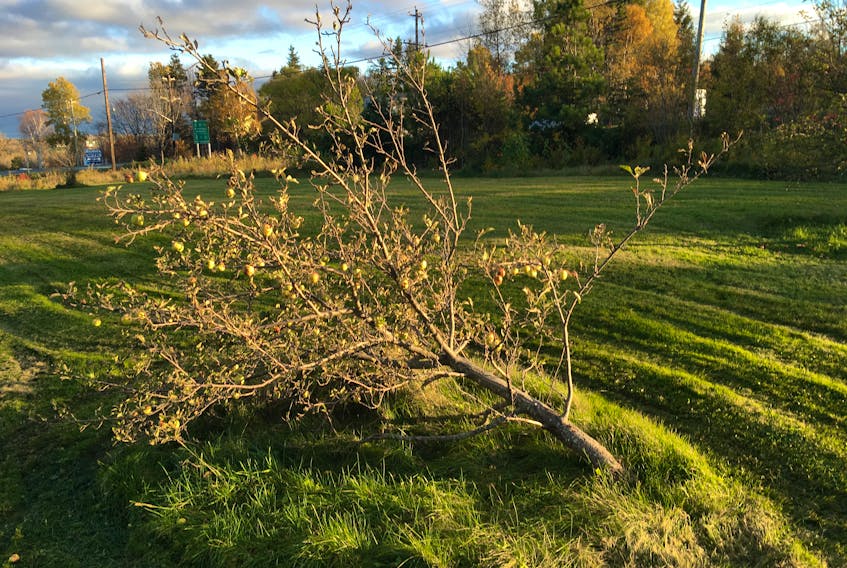I had a friend who told me a few years ago that he had two pear trees that just fell over. Odd.
A few years later my own young plum tree started to slant a bit and as the fruit developed, it became more and more top heavy. By fall it was leaning by more than 45 degrees with its roots still anchored in the ground.

When hurricane Harvey hit Texas, I saw a post on Facebook — huge mature trees were being blown over (but not snapped off or uprooted) by the wind when the ground was saturated by flood waters.
Saturated soil and wind and very sandy soil seemed to be my problem. Having just changed the water drainage pattern on the property, I realized my sandy soil saturated with rain water failed to hold roots secure — I guess it was no coincidence that the plum tree was leaning in the direction of the prevailing winds. It had simply blown over because its roots were able to shift in the soggy soil.
Hoping I had a grasp on the situation, I drove a post into the ground upwind from the tree and waited for heavy fall rains.
I thought that trying to straighten it when the soil was dry would be more difficult and might damage the roots, so I bided my time.
After a heavy rain, I was able to lift the tree a bit and tie it to the post. I thought that a gradual approach would be best so with each big rain in the fall and the following spring, I hoisted it a little bit further until I managed to bring it upright. After two years, it remains straight but I am going to keep the post and rope in place for now, just in case.
I was careful not to tear the bark of the young tree as I tightened the rope each time and I will keep an eye on the trunk where it is tied since a support can constrict circulation.
The lifeblood of trees, water and its dissolved sugars and nutrients, are circulated in channels in the soft smooth underlayer of the bark. This area is as essential to the tree as our own circulatory system is to us.
A few relevant thoughts on trees on your property — think about soil and wind conditions and consider planting it in a more protected area, this would be the case anyway if you’re going for fruit production. It’s best if a young root system doesn’t depend on the support of a stake when it is developing, however, it may be needed. If so, leave some slack so that the tree has to fight the wind a bit and consider a piece of garden hose as a gentle material to put in contact with the trunk.
There are some shrubs and young trees that might suffer some dieback from harsher winter winds. Gardeners use burlap to shield from winds, however, I have read that this can hold too much dampness around the plant.
My favourite approach to winter protection is to gather used Christmas trees and either stake them upright or nestle them in against the northwest or windward side. “Used Christmas tree” implies that you wait until winter has set in and they're readily available then. This protects a more tender plant from wind and accumulates snow, which especially helps provide protection.
Caroline Cameron lives in Strathlorne, Inverness County, and offers gardening and guiding services around Cape Breton Island. She welcomes your gardening comments and questions at [email protected] and on Facebook at Nature/Nurture Gardening & Hiking.









